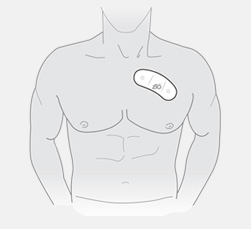
Lessons From My Heart Monitor
On an early Sunday morning, while eating Special K cereal accompanied by strawberry Greek yogurt and watching Keeping Up With The Kardashians, something didn’t feel right. Something felt tight and tense. Something felt like it was fluttering and pounding out of my chest. It was my heart. I did not know what to think of it at first, so I quickly rushed up the stairs to tell my mom I wasn’t feeling right. I decided that I needed to lie down for a few quiet minutes. Once my symptoms passed, I thought it was completely gone, but that wasn’t that case. Throughout the next few days, these episodes continued to occur. So, I finally made the decision to go see a doctor.
There is no certainty of what’s happening within the eleven systems that make up my body; however, something is triggering these small “attacks,” whether it be stress, anxiety, or something called SupraVentricular Tachycardia: a glitch in the electrical system that causes idiopathic systems of shortness of breath, an increase in heart rate, dizziness, chest pain, tingling in the arms and neck, etc. Because my episodes may not happen in the doctor’s office, I wear a heart monitor that is supposed to track my heart rate for fourteen days. By the time this column is published, I will be halfway done with the wearing of my heart monitor.

To describe what it may look like, it is not large, noticeable, or a device that I have to carry around, but rather a large, sticker-like patch with a clear monitor attached to it about the size of a handheld pencil sharpener with two small electrodes that are stuck on the left part of my chest over my heart. My heart monitor is waterproof, so it does not prevent me from taking a shower. It also doesn’t limit any activities; I can still ride my horse Rudy, exercise, and attend school. When I do feel a symptom, there’s a button right in the middle of the small device that I press. After I remove my heart monitor, which will be in one week, the doctor will go back and review all the data that my heart monitor captured. The idea of pressing the button is to let the doctor know if when I felt my symptoms so he can see if they correspond with my heart rate. Also, there’s a small paper booklet that I carry around to record my symptoms. I turn that in, too.
But I am not writing this to explain to everyone what’s been happening with me; I learned some very important lessons while wearing my heart monitor for these past seven days that I felt were necessary to share. When I first walked into the Helen Devos Children’s Hospital to check in for my appointment with my pediatric cardiologist, I saw a child much younger than me dealing with something much more severe: cancer. I do not know the name of this child or his or her’s life story. The small ten or eleven year old child was sitting in a wheelchair as well as wearing a red and blue bandana to keep their head warm. The child was very pale and fragile, but somehow managed to have a smile on their face. It was amazing that through all the pain, testing, and sacrifices that someone so young had to make, they were still smiling ear to ear. For me, I had to take a step back and realize that there’s a bigger picture. I had to realize that through everything we go through in life, we should always to try to find happiness because positivity always dominates negativity.
I also learned something else through wearing my heart monitor. Unlike the child who has cancer, you would not even notice my heart monitor unless I were to tell you about it. Nobody would label me as someone who is unhealthy or with a possible medical issue. With that being said, we shouldn’t make assumptions about people. Just because you cannot see my heart monitor does not mean that there’s nothing wrong with me and vice versa to the child with cancer; just because it may be obvious that the child is ill and sick, doesn’t mean that he or she is depressed, unhappy, or upset.
Lastly, like I said above, my heart monitor does not prevent me from doing any of my everyday things. As difficult and competitive as our school system may be, we should not take for granted that we have the opportunity to come here for education because there may be a child elsewhere who physically cannot come and handle the circumstances of school. There may be a child with cancer who cannot play their favorite sport or shop at their favorite store because of their condition. There may be a child out there who is too embarrassed to go out with friends or may not even have any because of what they physically look like. I never realized how lucky I am to be the healthy and happy sixteen year old girl that I am.
So, when it come does to it, who knows what may or may not be wrong with me? Who knows if in another week I will be back in the hospital getting more tests to find out what’s causing my symptoms, and who knows if in a year from now I will be ill or even perfectly healthy? For now, I am grateful for the way I am both physically and mentally today because I could have it way worse.